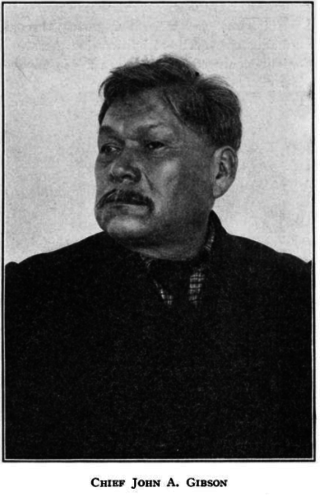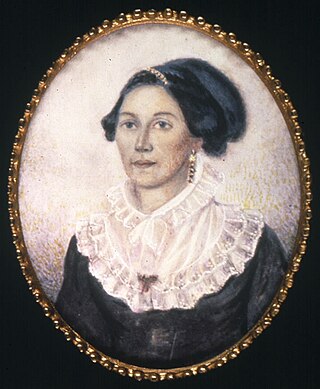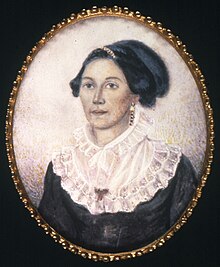
Hiawatha, also known as Ayenwatha or Aiionwatha, was a precolonial Native American leader and co-founder of the Iroquois Confederacy. He was a leader of the Onondaga people, the Mohawk people, or both. According to some accounts, he was born an Onondaga but adopted into the Mohawks.

Among the Haudenosaunee the Great Law of Peace, also known as Gayanashagowa, is the oral constitution of the Iroquois Confederacy. The law was written on wampum belts, conceived by Dekanawidah, known as the Great Peacemaker, and his spokesman Hiawatha. The original five member nations ratified this constitution near modern-day Victor, New York, with the sixth nation being added in 1722.

Thayendanegea or Joseph Brant was a Mohawk military and political leader, based in present-day New York, who was closely associated with Great Britain during and after the American Revolution. Perhaps the best known Native American of his generation, he met many of the most significant American and British people of the age, including both George Washington and King George III.

The Mohawk people are the most easterly section of the Haudenosaunee, or Iroquois Confederacy. They are an Iroquoian-speaking Indigenous people of North America, with communities in southeastern Canada and northern New York State, primarily around Lake Ontario and the St. Lawrence River. As one of the five original members of the Iroquois League, the Kanienʼkehá꞉ka are known as the Keepers of the Eastern Door – the traditional guardians of the Iroquois Confederation against invasions from the east.

The Onondaga people are one of the five original nations of the Haudenosaunee (Iroquois) Confederacy in the Northeastern Woodlands. Their historical homelands are in and around present-day Onondaga County, New York, south of Lake Ontario.

Six Nations is demographically the largest First Nations reserve in Canada. As of the end of 2017, it has a total of 27,276 members, 12,848 of whom live on the reserve. It is the only reserve in North America that has representatives of all six Haudenosaunee nations living together. These nations are the Mohawk, Cayuga, Onondaga, Oneida, Seneca and Tuscarora. Some Lenape also live in the territory.

Kanesatake is a Mohawk settlement on the shore of the Lake of Two Mountains in southwestern Quebec, Canada, at the confluence of the Ottawa and Saint Lawrence rivers and about 48 kilometres (30 mi) west of Montreal. People who reside in Kanehsatà:ke are referred to as Mohawks of Kanesatake. As of 2022, the total registered population was 2,751, with a total of about 1,364 persons living on the territory. Both they and the Mohawk of Kahnawake, Quebec, a reserve located south of the river from Montreal, also control and have hunting and fishing rights to Doncaster 17 Indian Reserve.

The Mohawks of the Bay of Quinte (MBQ) are a Mohawk First Nation within Hastings County, Ontario. They control the Tyendinaga Mohawk Territory, which is a 7,362.5 ha (18,193-acre) Mohawk Indian reserve on the Bay of Quinte in southeastern Ontario, Canada, east of Belleville and immediately to the west of Deseronto. They also share Glebe Farm 40B and the Six Nations of the Grand River reserves with other First Nations.
The Great Peacemaker, sometimes referred to as Deganawida or Tekanawí:ta was by tradition, along with Jigonhsasee and Hiawatha, the founder of the Haudenosaunee, commonly called the Iroquois Confederacy. This is a political and cultural union of six Iroquoian-speaking Native American tribes residing in the present-day state of New York, northern Pennsylvania, and the eastern portion of the province of Ontario, Canada.

The Four Indian Kings or Four Kings of the New World were three Mohawk chiefs from one of the Five Nations of the Iroquois Confederacy and a Mohican of the Algonquian peoples, whose portraits were painted by Jan Verelst in London to commemorate their travel from New York in 1710 to meet the Queen Anne of Great Britain. The three Mohawk were: Sa Ga Yeath Qua Pieth Tow of the Bear Clan, called King of Maquas, with the Christian name Peter Brant ; Ho Nee Yeath Taw No Row of the Wolf Clan, called King of Canajoharie, or John of Canajoharie; and Tee Yee Ho Ga Row, meaning "Double Life", of the Wolf Clan, also called Hendrick Tejonihokarawa or King Hendrick. The Mohican chief was Etow Oh Koam of the Turtle Clan, mistakenly identified in his portrait as Emperor of the Six Nations. The Algonquian-speaking Mohican people were not part of the Iroquois Confederacy. Five chiefs set out on the journey, but one died in mid-Atlantic.

The Haudenosaunee, commonly known as Iroquois, are an Iroquoian-speaking confederacy of Native Americans and First Nations peoples in northeast North America and Upstate New York. They were known during the colonial years to the French as the Iroquois League, and later as the Iroquois Confederacy. The English called them the Five Nations, comprising the Mohawk, Oneida, Onondaga, Cayuga, and Seneca. After 1722, the Iroquoian-speaking Tuscarora from the southeast were accepted into the confederacy, which became known as the Six Nations.

Tadodaho was a Native American Hoyenah (sachem) of the Onondaga nation before the Deganawidah and Hiawatha formed the Iroquois League. According to oral tradition, he had extraordinary characteristics and was widely feared, but he was persuaded to support the confederacy of the Five Nations.

The Tree of Peace Society was founded in 1984 and incorporated in New York State on October 17, 1994, as a "foreign" not-for-profit corporation. Its headquarters are located on the Akwesasne Mohawk reservation in Hogansburg, New York, which borders the provinces of Quebec and Ontario, Canada, along the St. Lawrence River.

Jigonhsasee was an Iroquoian woman considered to be a co-founder, along with the Great Peacemaker and Hiawatha, of the Haudenosaunee (Iroquois) Confederacy sometime between AD 1142 and 1450; others place it closer to 1570–1600. Jigonhsasee became known as the Mother of Nations among the Iroquois.
The Onondaga Council governs the Onondaga Nation, a sovereign nation, one of six nations of the Iroquois people, that lives on a portion of its ancestral territory and maintains its own distinct laws, language, customs, and culture. The "nation" is not governed by a Council of Chiefs since the notion of federalism and proportional representation was strictly adhered to. After the dissolution of the League, interests lie only in external matters such as war, peace, and treaty-making to further the unanimity of the United States government. Since Tadodaho was appointed to the council fire and given weapons to protect the sacred fire within the house, the Grand Council could not interfere in the internal affairs of the tribe. Their role was limited to matters between themselves and other tribes; they had no say in matters that were traditionally the concern of the ability of the clan names.

John Arthur Gibson (1850–1912) was a chief of the Seneca nation of the North American Iroquois confederation. Part Onondagan and part Senecan, he resided within the reserve of the Six Nations of the Grand River in Ontario, Canada. Knowledgeable about Iroquois culture, he is best known for the versions he provided of the Iroquois oral constitution, the Great Law of Peace. He acted as an advisor to the Canadian Department of Indian Affairs in matters relating both to Iroquois and non-Iroquois indigenous people. He was a well-respected player of the traditional Iroquois sport of lacrosse until he was blinded during a game when he was 31.
Seth Newhouse was a leader of the Iroquois confederacy. He advocated for their self-government in the Grand River region of Ontario and worked to record and preserve traditions of the people. In 1885 he arranged a manuscript version of the Great Law of Peace, which has been analyzed since, particularly for its faithfulness to the original.
The condolence ceremony or condolence council is a part of the Haudenosaunee Great Law of Peace. It governs succession to political offices after a leader dies.

The Yakoyaner (also spelt iakoiane) is a Kanien'kehá:ka (Mohawk) term for the Haudenosaunee clan mother. The Yakoyaner are typically senior women responsible for overseeing the clan's political, economic, and social stability. The Yakoyaner, also known as a clan mother, holds weight over their community and family and aids in guiding the clan's chief in matters of governance, diplomacy, and community affairs.
Clan Mothers, or Iakoianes, are a part of the Haudenosaunee government. Clan Mothers have the power to choose the successor of a chief or depose a chief if he is believed to be behaving improperly.















